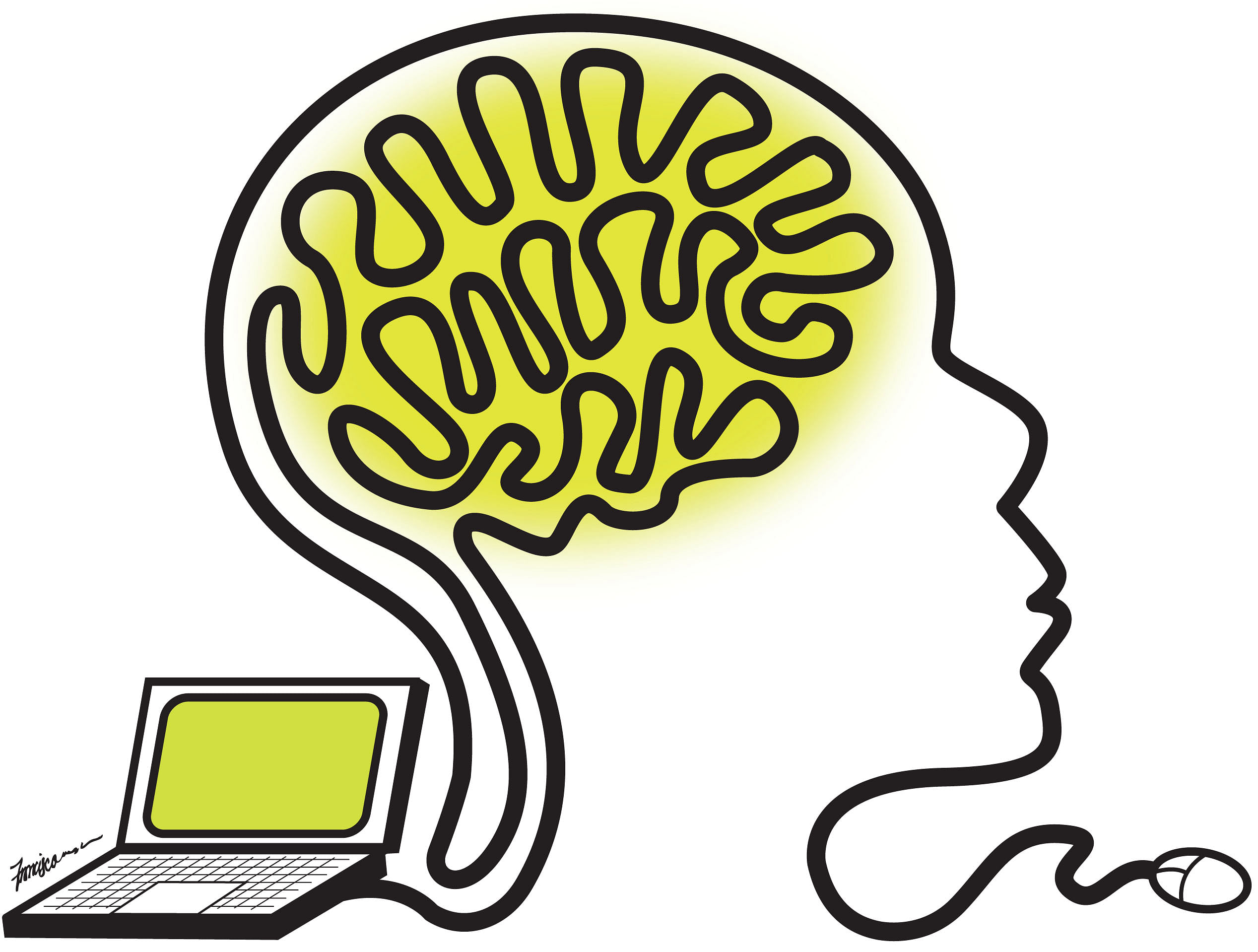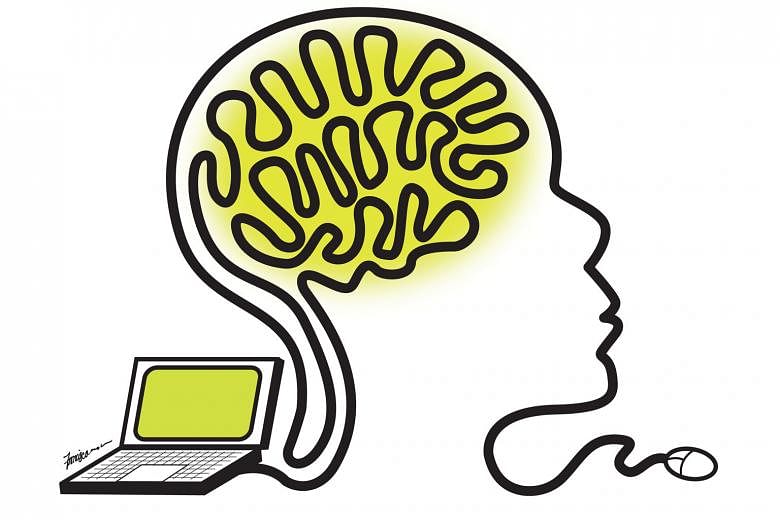Singapore's education system, which has already won many accolades, may be in for a further shake-up with the implementation of a new e-learning portal.
Touted as a game changer that will level the playing field for students, the Singapore Student Learning Space will be rolled out at all levels, from primary schools to junior colleges, from next year.
The portal, first announced by former education minister Heng Swee Keat in 2013, was to have been implemented at all primary and secondary schools last year, but was held back as the team gathered extensive feedback to shape it.
Since July, the portal's basic functions have been on trial at 62 schools. The Ministry of Education (MOE), together with the Government Technology Agency of Singapore, which leads the country's charge in digital transformation, will work with schools to further develop the platform ahead of its national roll-out.
So, what does the portal need to aim for to deliver a better learning experience for students?
MORE ENGAGING THAN A CHALK-AND-TALK LESSON
Firstly, observers agree that learning has to be made more engaging, particularly for the younger ones, to keep them interested.
Currently, the portal's resources, produced and curated by MOE, are based on the national curriculum, which means students will be learning what is expected of them. Schools can also contribute their own resources.

Students will have access to videos, games, simulations, quizzes and animations that will reinforce the learning of subjects, including English, maths, history and even physical education. Interactive timelines on World War II, for instance, can help students visualise how history unfolded and countries were shaped by years of conflict.
Students and teachers can access these materials in school and at home with their usernames and passwords.
However, such resources have to make learning come alive, rather than drill into students mundane content after content, say experts.
National University of Singapore lecturer Kelvin Seah believes providing such content alone after school may not be enough.
He added: "We need to ensure that students have appropriate avenues to clarify their doubts and seek help when they run into resources they cannot comprehend or fully understand."
Dr Seah suggested that an outlet for communication with an expert be provided via the portal, so that students can quickly get the help they need. "Ideally, this should be in real time, offering quick responses, perhaps even operating 24/7, so that students can clarify doubts while they are still fresh," he said.
DIAGNOSING LEARNING ISSUES
Through the portal, teachers can soon gauge how much students have learnt via online quizzes, analyse the results right away and adapt lessons to address learning gaps.
If done well, they will have the time to cover topics in depth and also accurately and swiftly pinpoint doubts that students may have.
Dr Timothy Chan, director of SIM Global Education's academic division, said this provides constructive feedback. "Students can gain a better sense that they are on the right track," he added.
Observers believe the portal has to be used as a tool to support a teacher's lesson, and not hinder it.
For one thing, the resource-rich platform, with its bank of quizzes, should not take too much of a teacher's lesson time.
Experts like Dr Chan pointed out that not every student learns the same way. Teachers, then, cannot be expected to cater to varied learning styles, even with the portal.
They hope that besides benefiting students, the e-learning platform can aid teachers by having them share best practices and work together on materials with their colleagues from other schools.
Admiralty Secondary social studies teacher Tay Peiyong, whose school is already putting the portal through its paces, has seen the immediate benefits. His students are more attentive during lessons and even the "quieter ones" are engaging in online discussions.
Ms Tay Lay Cheng, subject head of chemistry at Yishun Secondary, has also been using the portal to complement her lessons.
"As a teacher, I want to know what goes on in my students' minds during lessons," she said.
"Through the portal's quizzes, I can monitor students who have problems and address misconceptions on the spot."
Schools like hers may increasingly adopt the flipped classroom method of teaching, where some instructions are delivered outside the classroom, leaving classroom time for activities such as discussions.
"When they come to class, they can follow the lessons closely and come prepared with questions," said Ms Tay, adding that this involves giving students resources ahead of lessons.
For example, she has used videos to teach students about titration, a technique where a solution of known concentration is used to determine the concentration of another solution, before her class. Students were prompted at various points of the video to identify errors in the technique.
"Students now are IT-savvy," Ms Tay said. "Traditional classroom methods may not suit them as much. The use of technology could help them learn better."
ALLOWING STUDENTS TO COLLABORATE
Experts, such as Dr Seah, urged educators to use the portal to teach students in-demand skills, such as initiative, that may stand them in good stead in the new world of disruptions and the digital economy.
Like in universities, learning can also be moved out of the classroom, with students viewing short video lectures at home, leaving in-class time for exercises, projects and discussions. Nanyang Technological University, for example, uses this method for courses such as medicine and renaissance engineering, where students study disciplines such as engineering, business and liberal arts.
Collaboration, a skill needed in a rapidly changing world, will be a feature of the new portal, as students work on tasks together, share their views and learn from others.
A 2015 report by the World Economic Forum titled New Vision Of Education said that to thrive in today's innovation-driven economy, employees need a different mix of skills than in the past.
"In addition to foundational skills like literacy and numeracy, they need competencies like collaboration, creativity and problem-solving," it said.
With the portal, novel learning methods and in-demand competencies will no longer be unfamiliar, say experts. This may drive students at the lower levels to learn beyond their curriculum and cultivate a sense of curiosity - something often overlooked in favour of grades.
LEVELLING THE PLAYING FIELD
The portal is not just about access. It allows students to learn at their own pace anywhere, any time.
They can review their lessons, or go faster if they want.
Observers believe the platform may well reduce academic obsession as it gives students, regardless of school, the same access to quality resources.
One principal believes it will raise the standard of education here even higher.
As MP Denise Phua, who heads the Government Parliamentary Committee for Education, puts it, "good learning resources can now be shared instead of kept within the confines of particular schools".
And needy students need not worry about being left behind. They can apply to schemes for a computer and a subsidised Internet subscription. The NEU PC Plus Programme, for instance, offers needy students a new computer at an affordable price.
EVERY CHILD A UNIQUE CHILD
However, while the platform's offered resources can be engaging and interactive, it may not suit every student.
Some, who are dependent learners, may find it tough connecting the portal's activities and the textbook concepts covered.
The unmotivated ones, too, may lag far behind their self-driven peers, who may be able to learn more in advance.
With months to go before the portal's national roll-out, educators have to find a balance so certain students are not short-changed.
Despite this, MOE has to be credited for its "teach less, learn more" approach, which has allowed our kids more time to learn on their own.
Introducing the e-learning portal across all schools is a good move. The challenge for the ministry and schools is to deliver on its intended promise.


